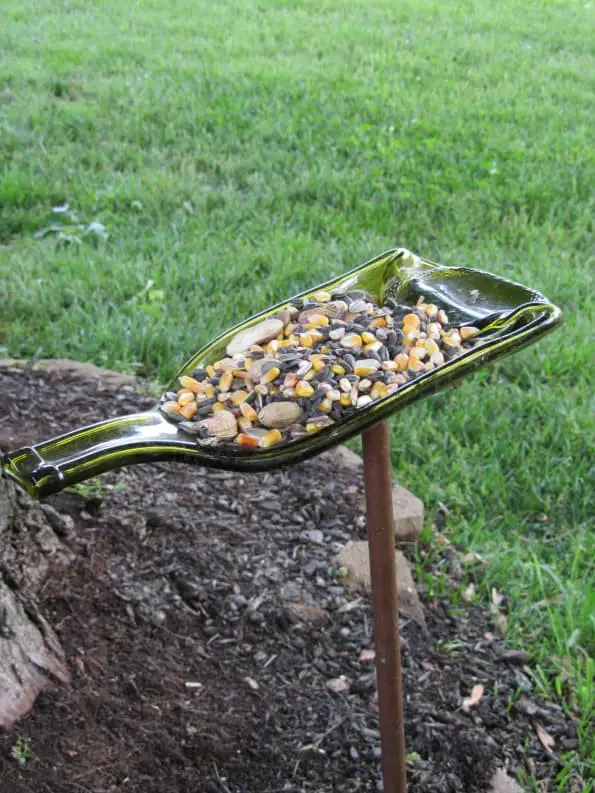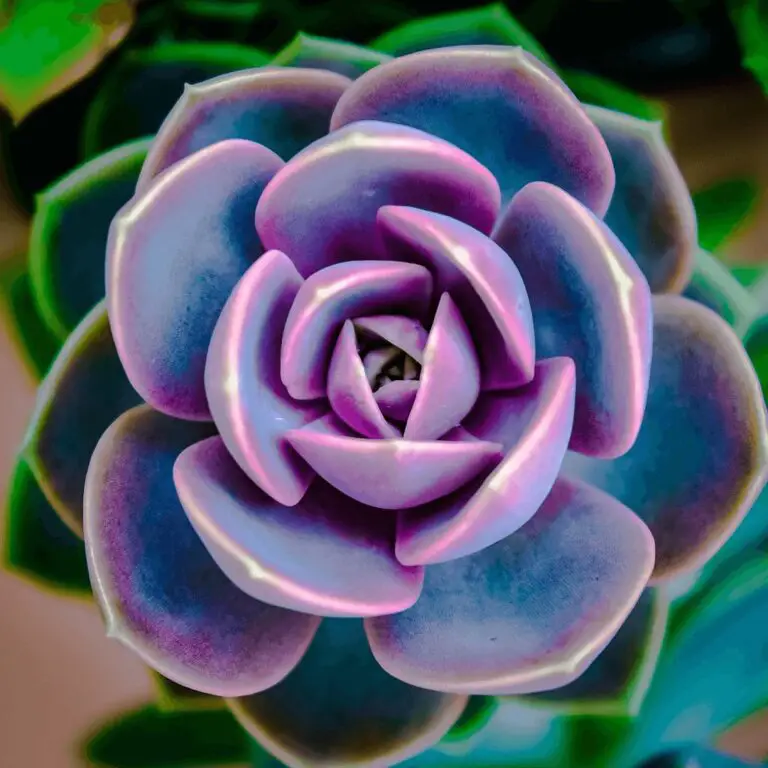42+ Different Types Of Herbs To Grow In Your Garden For Medicinal Use (Photos)
For centuries, herbalism has been a revered form of medicine, and its popularity endures to this day. With countless herbs at our disposal, it’s astonishing that many of us are unaware of their medicinal properties. This article will delve into 11 of the most sought-after herbs for medicinal use, providing valuable insights on how to cultivate these herbs and their corresponding health benefits.
We’ll also explore the world of herbalism beyond these 11 herbs, addressing questions about the diversity of herbs, their culinary applications, and the advantages of growing your own medicinal herbs.
How many types of herbs are there?
With an astonishing array of options, your garden can become a treasure trove of medicinal herbs. For centuries, people have relied on these plants to alleviate a range of ailments and health concerns. From the spicy warmth of ginger to the calming essence of chamomile, lavender, and peppermint, each herb boasts its own distinct therapeutic properties and health benefits, waiting to be harnessed for your well-being.
What are the most used herbs in cooking?
When it comes to cooking, there are a few herbs that stand out from the rest due to their versatility and popularity. Among these, basil, oregano, rosemary, and thyme are consistently used in many recipes. The unique flavors they bring to dishes make them staples in many kitchens.
What are the benefits of growing your own medicinal herbs?
Growing your own medicinal herbs at home can yield numerous advantages. Not only will you save money by avoiding the costly pharmaceutical industry, but you’ll also gain control over the amount of chemicals that enter your body through natural remedies. Furthermore, cultivating herbs allows for a deeper understanding of their uses and benefits, fostering a sense of self-sufficiency and empowerment.
What are the best medicinal herbs for beginners?
For those new to the world of medicinal herbs, it’s best to start with tried-and-true favorites like lavender, chamomile, and peppermint. The good news is that these three plants are remarkably easy to grow at home, requiring no specialized knowledge or equipment. Not only will you enjoy their calming presence in your garden, but you’ll also reap the rewards of their numerous health benefits, which can be applied to everyday life.
What is the best time of year to grow medicinal herbs?
When it comes to cultivating medicinal herbs, the ideal seasons are spring, summer, and fall. This is because these periods offer a comfortable temperature range of 65-75 degrees Fahrenheit (18-24 Celsius) for optimal growth. It’s crucial to avoid exposing your plants to freezing temperatures during winter months, as this can be detrimental to their survival. Make sure to provide a warm environment for your medicinal herbs, ensuring they don’t get too cold and suffer damage or even death.
What is the oldest herb?
Garlic’s ancient history stretches back over 5,000 years, with a rich legacy as a go-to remedy in traditional medicine. Its versatility and effectiveness have made it a staple ingredient in many cultures, with its therapeutic benefits still celebrated today.
Basil
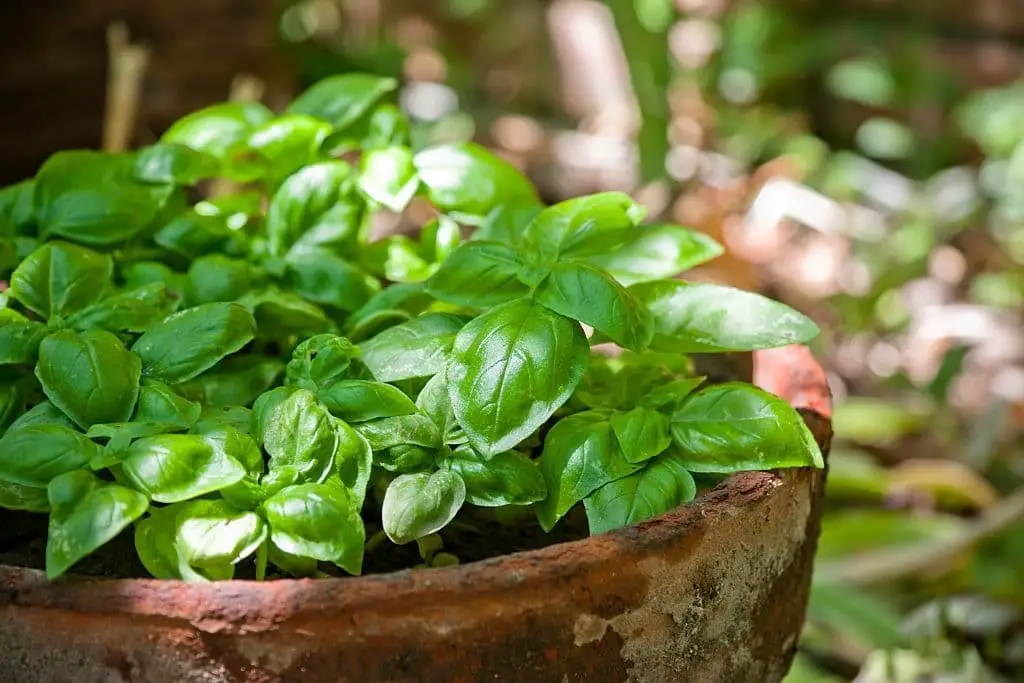
Ocimum basilicum, commonly known as Sweet Basil or Tulsi, is a tender annual herb native to tropical regions. Its versatility in culinary and medicinal applications makes it a popular choice among gardeners and cooks alike. This fragrant plant grows up to 24 inches tall, with oval-shaped leaves that resemble anise and emit a strong, sweet scent. For optimal growth, basil requires well-drained soil and plenty of sunlight every day.
It can thrive indoors or outdoors, making it an ideal addition to any garden or kitchen. The leaves are approximately two inches long and have a pointed tip, while the small white flowers bloom during the summer months. In terms of medicinal uses, fresh basil leaves offer relief from insect bites and stings, minor burns, fever, asthma, and sinus infections. The eugenol content acts as an anti-inflammatory agent, targeting swelling and inflammation caused by these injuries.
Culinary enthusiasts will appreciate basil’s role in flavoring a variety of dishes, including pastas and salads. Its sweet aroma also makes it a popular addition to teas and other beverages.
Bay Leaves

Laurus nobilis, commonly known as Bay Leaves, is a culinary staple with a rich history. Its distinctive green leaves, which have a bitter taste and a pungent aroma, are used whole or ground in slow-cooked dishes like soups, stews, sauces, and braises. As an evergreen tree that can grow up to 20 feet tall, Bay Leaves exhibit dark green, shiny leaves that are two to three inches long and one inch wide.
When cultivated indoors or outdoors in USDA zones eight through 11, they require full sun and well-drained soil. Bay Leaves have a multitude of uses beyond the kitchen. They possess antiseptic properties, making them effective for treating minor wounds and burns when applied externally. Internally, they can help alleviate sore throats, coughs, and colds, as well as stimulate digestive juices to ease indigestion.
In culinary applications, Bay Leaves are typically added whole to soups, stews, and sauces for their subtle yet distinct flavor. Alternatively, they can be ground and used as a seasoning on meats or vegetables before cooking them in oil or butter over medium heat until tender. This allows the flavors of the dish to meld together harmoniously, releasing the full potential of the Bay Leaves.
Bee Balm

Bee Balm (Monarda didyma) is a perennial herb native to North America, boasting fragrant leaves and vibrant red, purple, or pink flowers that bloom in the summer months. This charming plant stands at approximately three feet tall, with its foliage emitting a sweet aroma. Bee Balm thrives in full sun but can adapt to partial shade, preferring well-drained soil. It’s suitable for cultivation indoors or outdoors in USDA zones four through nine.
Beyond its visual appeal, Bee Balm offers several practical uses. Its leaves and flowers have medicinal properties, making it a natural remedy for minor wounds, burns, sore throats, coughs, and colds. The plant also possesses anti-inflammatory qualities.
In addition to its medicinal value, Bee Balm is a flavorful herb that can be used in various culinary applications. Fresh or dried leaves can be added to salads or tea, while the flowers can be steeped to make a soothing tea.
Borage

Borage (Borago officinalis) is an annual herb that hails from the Mediterranean region, boasting hairy leaves and vibrant blue blooms that emerge during the summer months. This low-maintenance plant grows up to two feet tall, making it a great addition to any garden or indoor space. Growing borage is relatively straightforward. It thrives in USDA zones four through nine, preferring full sun but tolerating some shade.
The plant requires well-drained soil and can’t handle excessive moisture, so be sure to provide it with suitable growing conditions. Beyond its aesthetic appeal, borage has a range of medicinal and culinary uses. For instance, it’s been used to alleviate symptoms of anxiety, stress, and depression, while also supporting memory function and cognitive performance.
The leaves are edible and can be added fresh to salads, soups, or tea, while the flowers are equally delicious and can be used as a garnish for desserts like ice cream sundaes. Simply dry the leaves for later use or add them to your favorite recipes.
Calendula

Calendula officinalis, also known as pot marigold and common marigold, is an annual herb that can grow up to 12 inches tall. Its bright yellow and orange flowers make it an attractive addition to any garden. Calendula is commonly used for its medicinal properties and as a natural dye or food coloring. To cultivate this plant, it thrives in full sun but can tolerate partial shade and continues to bloom until the fall frost.
It prefers well-draining soil that’s slightly alkaline with plenty of nitrogen-rich compost added. You can start calendula indoors four weeks before the last frost date or directly sow it in the garden once the danger of frost has passed. Harvest by clipping individual flowers as they open or cutting the entire plant just above the soil line.
Calendula flowers have a bright, cheery appearance and range in color from yellow to orange to deep red, typically measuring about two inches across with five petals. The flowers grow on tall stalks above the plant’s foliage. Medicinally, calendula is commonly used topically for skin conditions such as minor cuts and scrapes, bruises, burns, and sunburns.
It can be made into a salve or ointment to treat skin irritations like eczema or dryness due to its anti-inflammatory properties, which may also help reduce swelling and pain. Calendula can be consumed internally as a tea or tincture for digestive issues such as constipation, indigestion, and diarrhea. It’s thought to calm the gut and support digestion, while possibly possessing anti-microbial properties that could aid in fighting infections.
In culinary applications, calendula flowers can be added to soups, salads, and stews for color enhancement and flavor or used to make a tea by steeping the petals in hot water.
Calamint

Calamintha nepeta, commonly referred to as Calamint, is an aromatic perennial herb that reaches heights of approximately two feet. Its hairy, mint-scented leaves and tubular flowers, which bloom from June to September, are notable features. Native to Europe and Asia, Calamint can thrive in most parts of the United States when properly cared for. For optimal growth, Calamint prefers full sun but can tolerate partial shade. It excels in well-drained soil with an abundance of organic matter added.
Propagation is possible through seeding or dividing the plant in early spring. To harvest, clip the stems just above the soil line and dry them in a dark, well-ventilated area before storage. The appearance of Calamint’s leaves closely resembles those of other mint varieties. The plant itself exhibits a square shape, with tubular flowers sprouting from tall stalks above the foliage. These blooms display a range of colors, including purple, white, and blue, and emit a distinct minty aroma.
Calamint has been utilized for centuries to treat various ailments, such as respiratory issues, indigestion, headaches, and fever. It is believed to possess calming properties, making it an effective natural remedy. The herb can be consumed internally in the form of tea or tincture, or applied topically as oil or salve. In culinary applications, Calamint adds a delightful flavor to salads, soups, stews, and other dishes when used as a seasoning.
It can also be brewed into a soothing tea by steeping the leaves in hot water.
Catnip

Nepeta cataria, also known as catnip, is a perennial herb that stands at approximately three feet tall, boasting leaves that grow in opposite pairs along the stem. The delicate white or lavender flowers bloom from June to September, originating from Europe and Asia but adaptable for cultivation in most parts of the United States. This versatile plant thrives in full sun, tolerating partial shade as well. Its optimal growing conditions include well-drained soil rich in organic matter.
Catnip can be started from seed or propagated through division in early spring. To harvest, simply clip stems just above ground level and dry them in a dark, ventilated area. Once dried, store the leaves in an airtight container in a cool, dark space for up to six months. From a visual standpoint, catnip is characterized by its opposite leaves and white or lavender flowers.
Medicinal properties are where catnip truly shines.
As a sedative and antispasmodic, it offers mild analgesic benefits, making it an effective treatment for headaches, migraines, and muscle aches when consumed as tea. Externally, catnip can be used to accelerate healing in the case of bruises, cuts, and wounds.
Beyond its medicinal applications, catnip also boasts a pleasant mint-like flavor, rendering it suitable for seasoning meats, vegetables, and even desserts.
The herb is commonly employed to brew tea, providing a soothing and flavorful beverage option.
Caraway

Carum carvi, also known as caraway, is a biennial herb that grows up to two feet tall, featuring feathery leaves and small white flowers. This versatile plant has been used medicinally for centuries to alleviate digestive issues such as gas, bloating, and cramps, as well as respiratory problems like bronchitis and asthma. Its medicinal properties also make it useful in treating indigestion, diarrhea, and muscle aches.
To cultivate caraway, start by sowing the seeds indoors during autumn or spring, then transplant the seedlings to a location with full sun and well-drained soil after they reach six inches tall. While caraway prefers direct sunlight, it can tolerate some shade as long as it receives sufficient moisture throughout its growing season, which spans from spring through fall.
In addition to its medicinal uses, caraway seeds are also used in various culinary applications, including soups, stews, breads, cakes, and cookies. The leaves can be chopped or ground into a powder for use as an herb seasoning, similar to oregano.
Chamomile
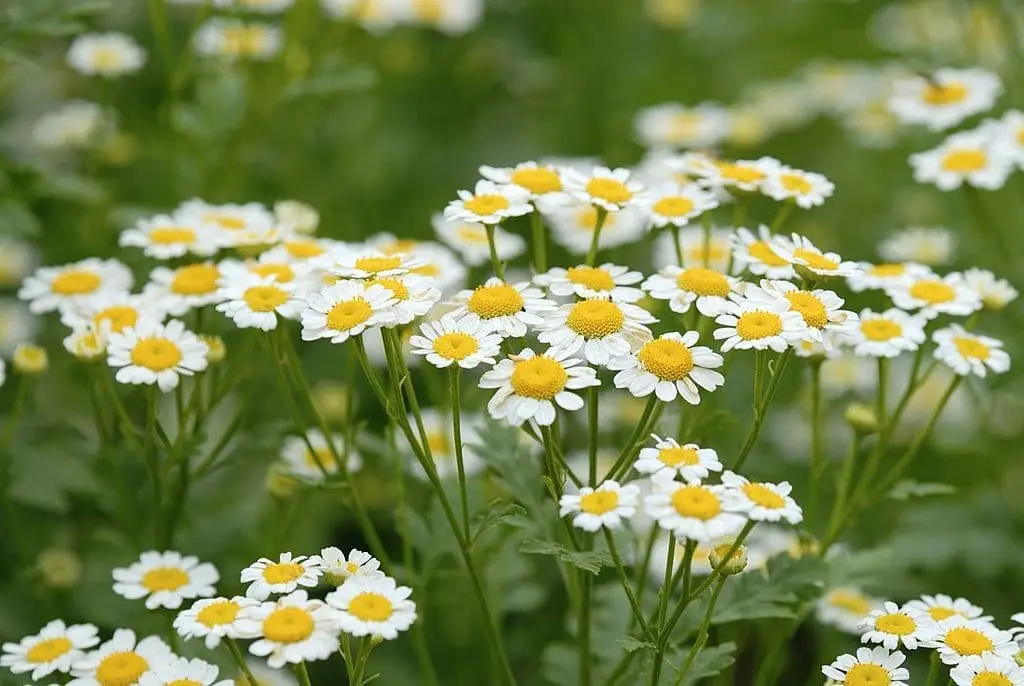
Matricaria recutita is an annual herb that stands at approximately two feet tall. Its daisy-like flowers feature a yellow center surrounded by white petals, emitting a sweet apple fragrance. This versatile plant is often consumed as a soothing tea, touted for its potential to promote relaxation and digestion. For optimal growth, chamomile requires full sun and well-drained soil.
Sow the seeds directly in the garden once all frost-related dangers have passed, and thin them out to about 12 inches apart. In addition to its culinary applications, chamomile tea is also prized for its medicinal properties. It’s believed to be a natural relaxant, capable of alleviating tension headaches, menstrual cramps, and anxiety. Furthermore, the herb can be used topically to treat skin irritations such as eczema and sunburn.
Beyond its herbal uses, chamomile flowers are also employed to flavor tea, jam, syrup, and wine.
Chervil

Chervil, scientifically known as Anthriscus cerefolium, belongs to the Apiaceae family. This delicate herb boasts a subtle anise flavor, earning it popularity in France where it’s often used to elevate dishes like eggs, fish, and poultry. Its leaves are also rich in vitamins A and C, making them a nutritious addition to salads. For optimal growth, chervil thrives in moist, well-drained soil under full sun to partial shade. It can be cultivated from seed or transplanted once established.
Beyond its culinary uses, chervil has medicinal properties, too. It’s employed to treat respiratory issues like bronchitis and asthma, as well as serving as a detoxifier and digestive aid.
Chives

Chives, scientifically known as Allium schoenoprasum, are a type of cold-hardy perennial that grow in clumps. Their long, thin leaves boast a mild onion flavor, while the pink flowers add a pop of color to any garden. With proper care, chives are easy to cultivate and can thrive in full sun or partial shade conditions. To reap their culinary benefits, simply snip off the leaves with scissors above the soil level for a flavorful addition to your meals.
Alternatively, harvest the flowers by cutting them at ground level before they bloom for an added burst of flavor. Beyond their taste, chives also possess medicinal properties, thanks to their sulfur compounds that have been shown to combat cancer and heart disease. Rich in vitamin C and potassium, incorporating chive into your diet can provide a nutritional boost.
The versatile herb is perfect for adding to salads, eggs, potato dishes, and more – so get creative and start enjoying the benefits of this edible gem!
Cicely
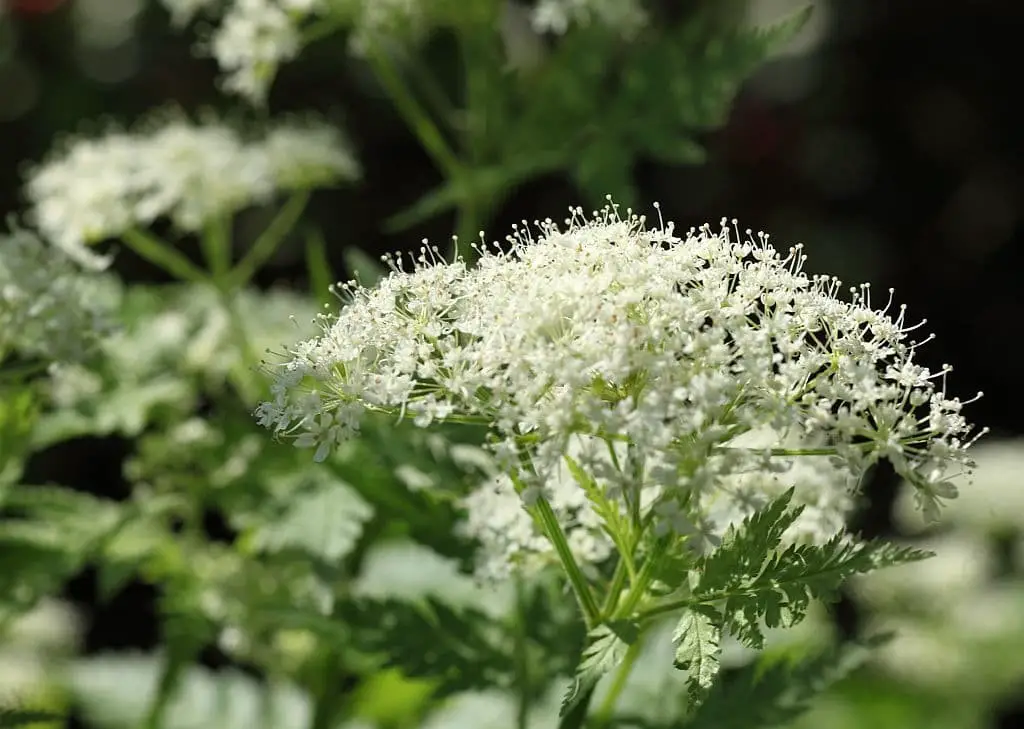
Cicely (Myrrhis odorata) is a perennial herbaceous plant that thrives in Europe, Siberia, China, Japan, and other parts of Asia. Characterized by its erect stems and feathery foliage, the plant can grow up to 70 cm tall, with clusters of leaves divided into three leaflets that emit a strong aniseed scent. In summer, small white umbels bloom, adding to the plant’s charm. To cultivate Cicely, one should provide it with moist soil in partial shade.
Propagation is possible through seeds or root division. The edible leaves and flowers of Cicely boast a sweet aniseed flavor, making them a popular choice for flavoring food, teas, and tinctures. The roots can be consumed as a vegetable, while the seeds are used to flavor absinthe, vermouth, and liqueurs. Some even believe that Cicely aids in weight loss! This plant is rich in selenium, an essential mineral with numerous health benefits.
Selenium acts as an antioxidant, supports immune function against viruses, prevents cancer, and assists the body in fighting viral infections. In terms of medicinal applications, Cicely’s leaves are crushed to create a poultice for wounds. The plant’s tea is effective in treating sore throats, coughs, chills, fevers, and colds due to its expectorant properties.
Additionally, Cicely can be used to aid digestion, increase appetite, relieve bloating and flatulence, and even help with heart disease and viral infections prevention.
Cilantro / Coriander

Cilantro (Coriandrum sativum) is an annual herb with a rich cultural heritage, native to Southern Europe and the Mediterranean. Its leaves and seeds have been utilized in traditional medicine for centuries. The herb boasts a pungent, peppery flavor, making it a popular addition to various dishes such as salsa, guacamole, and chili. When consumed in tea or tincture form, cilantro is believed to possess medicinal properties that can alleviate symptoms of diarrhea, indigestion, and heartburn.
Furthermore, its leaves have been known to treat digestive disorders, regulate blood sugar levels, and improve skin health. The seeds, on the other hand, are said to promote better sleep quality by addressing insomnia issues. In terms of culinary uses, cilantro leaves can be used fresh or dried, with the entire plant – including stems and roots – being optimal for cooking. Due to its potent flavor, it’s essential to use cilantro sparingly in recipes.
Seeds are typically ground into a powder or added whole to enhance the flavor of dishes like curries and sauces.
Culantro

Eryngium foetidum, known as culantro, is a leafy green herb that has been a staple in Mexican cuisine for millennia. Its distinctive flavor, often described as peppery, sets it apart from its more well-known cousin, coriander. While the two herbs share some similarities, culantro’s leaves are generally sharper and have a more robust aroma. When used sparingly, this potent herb can elevate salsas, soups, and stews to new heights.
To cultivate culantro, gardeners will want to provide it with full sun or partial shade, as well as moist, well-drained soil that can tolerate some drought. With proper care, this fast-growing herb is sure to thrive. Beyond its culinary applications, culantro has a long history of medicinal use. Its high concentration of antioxidants and vitamins A and C makes it an effective immune-booster.
It’s also been used to treat indigestion, nausea, and vomiting, as well as alleviate symptoms of arthritis, fever, and diabetes-related blood sugar issues. The leaves can be consumed raw or steeped into a tea to harness their medicinal properties.
Dill

Dill (Anethum graveolens), a versatile herb native to Southern Russia and Western Asia, boasts an unmistakable flavor that can elevate salads and various dishes. Its leaves and seeds are the most commonly used parts. To grow dill at home, ensure the soil drains well, as it dislikes wet conditions. This herb has been utilized in traditional medicine for its digestive aid properties, antispasmodic effects, and galactagogue benefits (aiding lactation).
In culinary practices, dill is a popular addition to pickles, potato salad, and eggs. The dried seeds are often used as a spice, while the leaves, also known as dill weed, are prized for flavoring soups, stews, salads, and fish. Additionally, dill has been found to be highly effective in relieving gastrointestinal issues such as colic, indigestion, and flatulence.
Fennel

Foeniculum vulgare, commonly referred to as fennel, is a robust perennial herb that thrives in clumps. Its yellow blooms are accompanied by long, slender leaves boasting a distinctive licorice flavor. This versatile plant has been utilized for centuries, with its benefits extending beyond the culinary realm. To cultivate fennel, it’s essential to provide it with full sun and well-draining soil.
This hardy perennial is remarkably resilient, but its growth can be stunted in the absence of optimal conditions. Fennel’s medicinal properties are equally impressive, as it has been documented to possess carminative, anti-inflammatory, antispasmodic, and anticlotting agent characteristics. These attributes have made it a valuable addition to traditional medicine, particularly in cases where digestive issues arise.
Beyond its medicinal applications, fennel is a staple ingredient in many Italian dishes, including pasta and risotto. The seeds of this herb can also be used in baking, adding a unique flavor profile to various recipes. As one of the oldest herbs known to humanity, fennel has been cultivated for centuries. Its ancient Greek roots demonstrate its enduring popularity as a medicinal plant.
Similarly, Native Americans have revered fennel for generations, utilizing it to alleviate indigestion and other gastrointestinal issues.
Feverfew
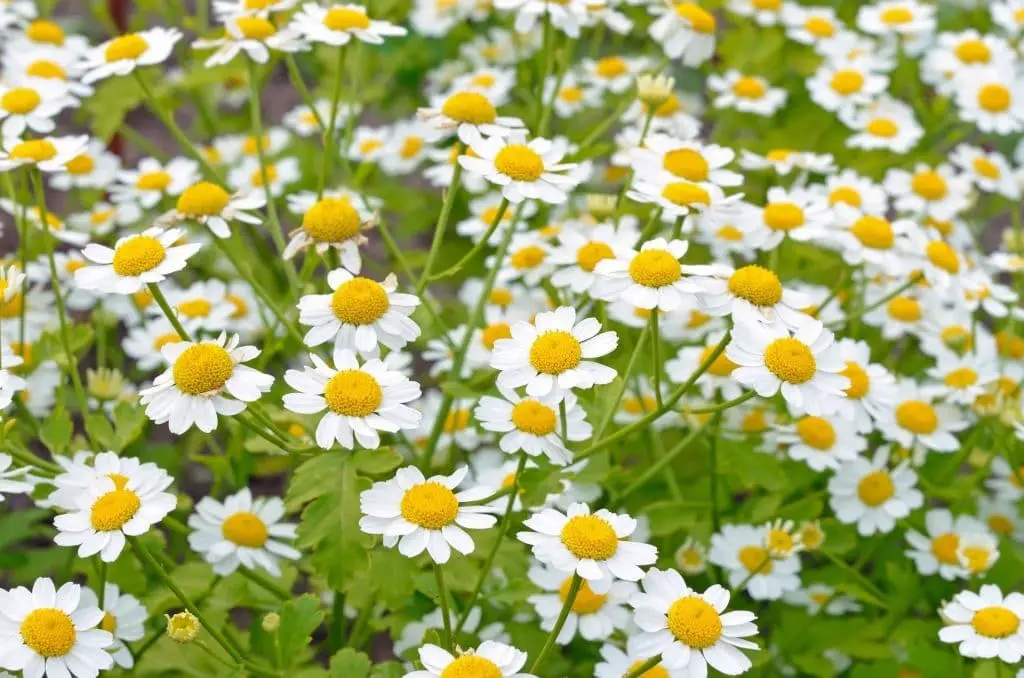
Feverfew, scientifically known as Tanacetum parthenium, is a small yet distinctive flower that thrives in temperate climates. Its feathery leaves and potent mint flavor make it a unique addition to any garden or culinary endeavor. When it comes to cultivating Feverfew, the key is to provide full sun and well-drained soil for optimal growth.
In terms of its medicinal properties, Feverfew has been found effective in treating a range of ailments, including migraine headaches, arthritis, fever, and digestive problems. The leaves can be used to brew a soothing tea or added fresh to salads and other dishes as an herb seasoning. Furthermore, traditional cultures have long recognized the benefits of Feverfew, with Native Americans employing it for centuries to alleviate headaches and fever due to its anti-inflammatory properties.
Its effectiveness in reducing migraine severity has also been documented, making Feverfew a valuable addition to any natural medicine cabinet.
Garlic
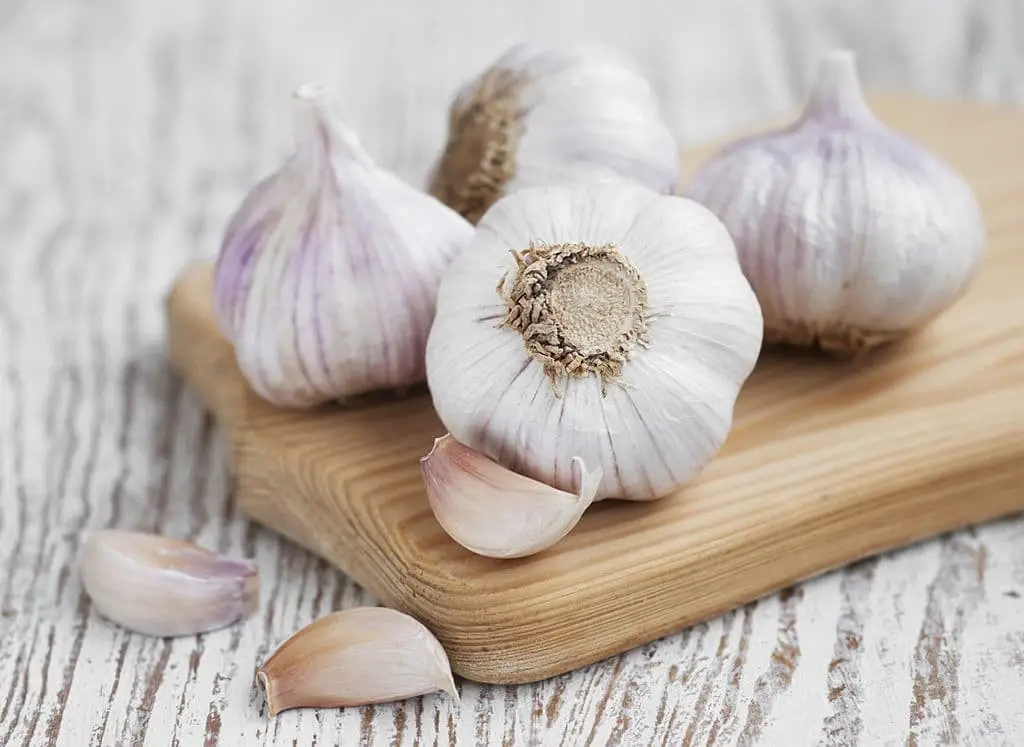
Garlic, scientifically known as Allium sativum, is a resilient perennial herb that grows in clumps, producing small purple flowers and long, thin leaves with a robust garlic flavor. This versatile plant can thrive in full sun or partial shade, making it an ideal addition to many gardens. Beyond its culinary uses, garlic has a range of medicinal properties, including antibiotic, antiviral, antifungal, and anti-inflammatory capabilities.
As a result, it is used to treat a diverse array of ailments and infections. In the realm of cuisine, garlic is a staple ingredient in Italian, French, and Chinese cooking, adding depth and complexity to a multitude of dishes. With its long history of medicinal use, spanning centuries, garlic has earned a reputation as a trusted remedy for a wide variety of health issues.
Germander

Germander, scientifically known as Teucrium chamaedrys, is a low-maintenance bushy herb with dark green leaves and tiny purple flowers. This versatile plant thrives in temperate climates, tolerating both full sun and partial shade. Its adaptability has made it a popular choice among gardeners.
To cultivate Germander successfully, it’s essential to provide it with well-drained soil and direct sunlight.
For those residing in colder climates, consider potting the herb and relocating it indoors during the winter months to ensure its survival.
In terms of medicinal applications, Germander is valued for its diuretic, astringent, and anti-inflammatory properties. This herb has been employed for centuries as a treatment for various ailments and infections due to its impressive antibiotic, antiviral, and antifungal attributes.
Ginger

Zingiber officinale, commonly known as ginger, is a resilient perennial that thrives in tropical climates. Its slender leaves stretch towards the sun, while small yellow flowers add a pop of color to the landscape. For optimal growth, ginger can be cultivated in full sun or partial shade, making it an adaptable addition to any garden.
Beyond its culinary uses, where it adds depth and warmth to various dishes, particularly in Asian cuisine, ginger has been utilized for centuries as a medicinal herb due to its impressive array of properties. It is effective in treating a wide range of ailments and infections, thanks to its antibiotic, antiviral, and antifungal properties, making it a valuable asset in traditional medicine.
Its carminative, anti-inflammatory, analgesic, antipyretic, and expectorant properties also render it a natural remedy for various health issues.
Ginseng

Ginseng (Panax quinquefolius or Panax ginseng) is a resilient perennial that thrives in temperate climates with conditions ranging from full sun to partial shade. Characterized by its slender leaves and small white blooms, this plant has been prized for centuries for its unique properties. For optimal growth, ginseng can be cultivated in either full sun or partial shade, making it an accessible addition to many gardens. Beyond its culinary uses, ginseng is renowned for its medicinal virtues.
It possesses a range of properties that make it effective against antibiotic-resistant infections, including antibacterial, antiviral, and antifungal capabilities. Additionally, it has been touted as an aphrodisiac, further solidifying its status as a revered ingredient in many Asian dishes.
Horseradish

A potent and pungent herb, horseradish boasts an impressive array of medicinal properties. Not only does it possess natural decongestant qualities, capable of effortlessly clearing sinus passages and lung congestion, but it also supports healthy digestion by facilitating the breakdown of food. Furthermore, this versatile root has been known to provide relief from skin irritations when applied topically.
In order to cultivate horseradish successfully, one must provide it with rich soil that is well-draining and sufficient sunlight to promote robust growth.
Lavender

Lavandula angustifolia, a beautiful and fragrant herb, requires well-drained soil and abundant sunlight to thrive. Its medicinal properties make it an excellent natural remedy for soothing the mind and body, promoting restful sleep, and providing relief from skin irritations. When cooking with lavender, it’s essential to use it sparingly, as its distinct flavor can overpower other ingredients. One of the most enjoyable ways to incorporate lavender into your daily routine is by making herbal tea.
Simply add fresh or dried lavender flowers to hot water and steep until the aroma is released. Pre-made lavender tea bags are also widely available at grocery stores. In addition to its medicinal uses, lavender can be used in a variety of healthy recipes, such as Lavender Lemonade, Lavender Honey Butter, and Blueberry and Lavender Muffins.
Lemon Balm

Lemon balm (Melissa officinalis) thrives in a sunny spot, but can also tolerate partial shade. This fragrant herb prefers rich soil that’s slightly acidic, with a pH range of 6-7. To boost its growth, apply fertilizer at the start of each growing season. During winter, mulch heavily to protect it from harsh temperatures. When it comes to medicinal uses, lemon balm is an excellent choice for managing anxiety and stress.
Its analgesic properties make it a great natural pain reliever, while also helping with digestive issues like upset stomachs and vomiting. In the kitchen, lemon balm’s zesty flavor pairs well with sweet and savory dishes. Try adding it to teas, smoothies, salad dressings, or pestos for a unique twist. For a soothing cup of herbal tea, steep fresh or dried lemon balm leaves in hot water until the aroma is released.
This versatile herb also lends itself well to recipes like Lemon Balm Iced Tea, Lemon Balm Chicken Salad with Quinoa and Apple, and Lemon Balm Pesto.
Lemon Verbena
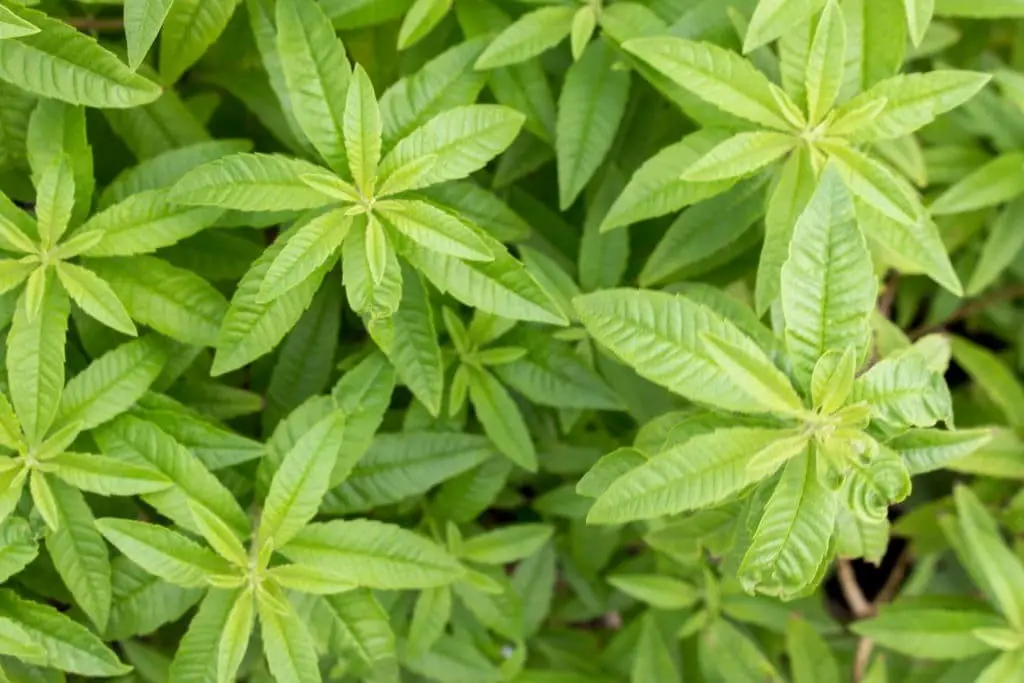
Lemon verbena, scientifically known as Aloysia triphylla, thrives in full sun with an abundance of water and well-drained soil. When grown indoors, it requires at least four hours of direct sunlight daily. Annual fertilization can be achieved by scattering compost around the base of the plant. This versatile herb not only treats anxiety, stress, and tension headaches, but also alleviates upset stomachs and indigestion.
Its citrusy flavor makes it an excellent addition to sweet and savory dishes, such as teas, smoothies, salad dressings, or pestos. In fact, lemon verbena is a staple for crafting soothing herbal teas by steeping fresh or dried leaves in hot water until the aroma is released. Moreover, its versatility has led to innovative recipes like Lemon Verbena Pancakes, Lemon Verbena Ice Cream, and Lemon Verbena Scones.
Lemongrass

Lemongrass (Cymbopogon citratus) thrives in conditions of full sun and rich, well-drained soil. While it can be cultivated indoors, a minimum of four hours of direct sunlight is necessary to ensure optimal growth. To promote healthy development, apply compost around the base of the plant once annually. This versatile herb boasts a range of medicinal properties, including its ability to alleviate anxiety and stress, indigestion, headaches, nausea, and vomiting.
In culinary applications, lemongrass’s citrusy flavor complements both sweet and savory dishes. It can be added to teas, smoothies, salad dressings, or pestos. For a soothing herbal tea, simply steep fresh or dried lemon balm leaves in hot water until the desired aroma is released. This herb also lends itself well to creating unique recipes like Lemongrass Tea Latte, Lemongrass and Ginger Tea, and Vietnamese Lemongrass Chicken.
Lungwort

Pulmonaria officinalis, commonly known as Lungwort, is a versatile herb that thrives in partial shade and well-drained soil conditions. As a low-growing, spreading plant, it requires minimal maintenance and can be easily propagated by dividing the plants in early spring. This hardy herb has been traditionally used to treat respiratory issues such as coughs, asthma, lung congestion, pneumonia, tuberculosis, and pleurisy.
Its general tonic properties also make it suitable for promoting overall bodily wellness. Lungwort’s leaves and stem juice can be infused or made into a tea, sweetened with sugar or honey if desired, providing a soothing and flavorful remedy.
Marjoram

Marjoram, scientifically known as Origanum majorana, belongs to the Lamiaceae family. This bushy perennial herb boasts small, gray-green leaves and produces delicate pink to lilac flowers. When it comes to medicinal applications, marjoram is often employed to alleviate digestive issues and respiratory problems such as bronchitis and asthma. It’s also believed to possess sedative properties, making it a popular natural sleep aid.
However, pregnant or breastfeeding individuals should exercise caution when using marjoram due to its potential risks. For optimal growth, marjoram requires full sun to light shade and thrives in well-drained soil with a pH ranging from five to eight. Cultivation tips dictate that leaves can be harvested as needed throughout the growing season for a constant supply, or dried for winter use when the plant is dormant.
To dry, simply cut stems just before flowering and suspend them upside down in a dark, dry environment. Marjoram’s culinary applications are numerous, particularly in Italian cuisine where it’s often incorporated into pasta sauces, pizzas, and other dishes, adding its unique flavor profile to any recipe.
Mint

Mentha spicata L., a popular herb known for its rich flavor and numerous health benefits, thrives in well-drained soil with partial shade. While it can tolerate full sun if provided with adequate water, mint is notorious for its invasive tendencies. Left unchecked, the roots of this perennial herb can spread rapidly, making it essential to contain them through container planting or barriers when direct sowing.
In addition to its culinary uses, mint has been used medicinally to alleviate digestive issues such as upset stomachs, cramps, and nausea. Its calming properties also make it a valuable treatment for respiratory problems like asthma, bronchitis, and sinus congestion. With its many benefits and versatility, it’s no wonder that mint is a staple in many herb gardens.
Myrtle
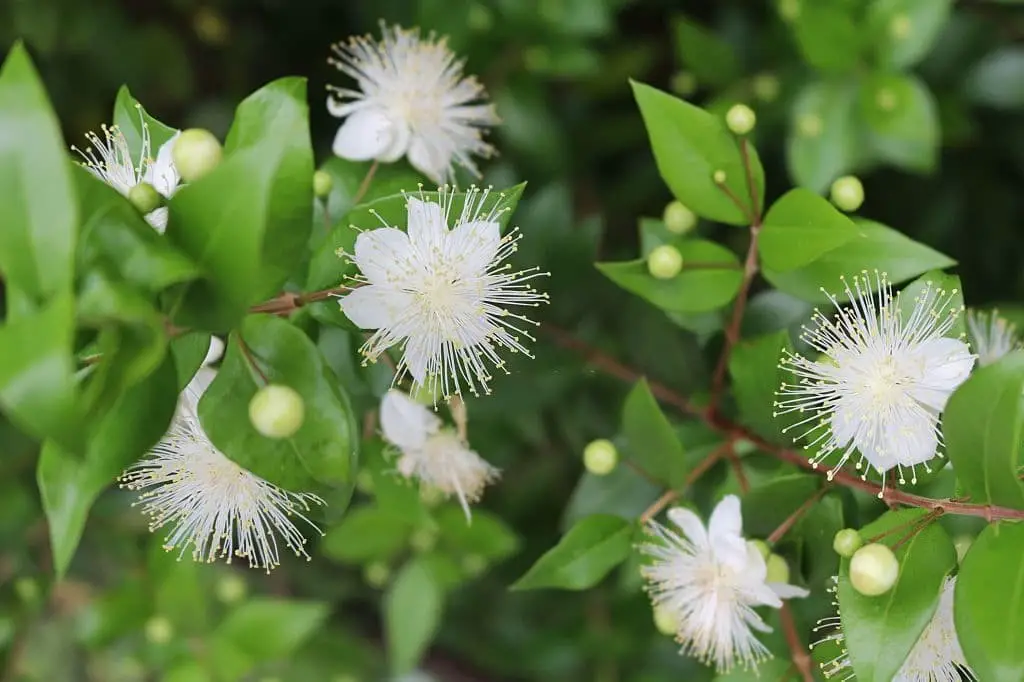
Myrtle, scientifically known as Myrtus communis, is an evergreen shrub characterized by small, dark green leaves. Its white or pink flowers and blackberry-like fruit are notable features. With a rich history of medicinal use dating back centuries, myrtle is believed to offer relief from respiratory problems, such as breathing difficulties, coughs, and colds. It’s also been used to treat stomach ailments and digestive issues when consumed as a tea.
In terms of cultivation, myrtle thrives in full sun but can tolerate partial shade. It prefers well-drained soil and is relatively drought-tolerant, requiring minimal watering. Furthermore, its berries are edible and boast a sweet, tart flavor, making them suitable for fresh consumption or incorporation into jams, jellies, and sauces.
Oregano

Origanum vulgare, also known as oregano, is a perennial herb that thrives in the Mediterranean region. Its botanical characteristics include opposite leaves and purple flowers that give rise to black fruits. With a growth range of 20-80 cm tall, this versatile herb has been utilized for centuries due to its medicinal properties. Oregano is effective in alleviating stomach pain, diarrhea, and vomiting, making it a valuable natural remedy for various digestive issues.
Beyond its health benefits, oregano is also a staple in many cuisines, particularly Italian, Greek, and Turkish cooking. Its pungent flavor makes it an essential component in pizza and pasta sauces, adding depth and warmth to these popular dishes.
Parsley

Petroselinum crispum, a biennial herb, is commonly cultivated as an annual crop. Its leaves and stems are utilized medicinally for a range of applications. Both internal consumption and external application to the skin are viable options for parsley. When growing this herb, it’s essential to provide full sun and well-drained soil. Seeds can be directly sown or transplanted for optimal results.
In terms of culinary uses, fresh parsley leaves serve as a versatile garnish, add flavor to soups and stews, or function as an ingredient in salads. As for medicinal applications, parsley has been historically employed to treat diuretic issues, asthma, constipation, coughs, indigestion, and kidney disorders. Parsley tea is also frequently utilized by lactating women to boost milk flow.
Peppermint

Peppermint (Mentha piperita) is a perennial herb that thrives in clumps reaching up to two feet tall. Its leaves boast serrated edges, while the stems feature distinctive purple spots. The small, delicate flowers are a vibrant shade of purple, and the fruits ripen to black. This aromatic herb boasts a potent, minty aroma and a sweet, refreshing taste. In the realm of medicine, peppermint is utilized to alleviate stomach issues such as cramps, nausea, vomiting, and diarrhea.
Its applications also extend to treating headaches, muscle pain, and chest colds. To cultivate peppermint, it’s essential to provide moist, well-drained soil in full sun or partial shade. This herb is sensitive to extreme temperatures and humidity, so planting it in pots that can be moved indoors for the winter may be necessary. Use a rich planting medium consisting of compost, peat moss mixed with sand and perlite.
Regular watering and bi-weekly fertilization with a high-nitrogen fertilizer like fish emulsion or seaweed extract will promote healthy growth. Harvesting peppermint leaves is a straightforward process. Wait until they reach three inches in height, then take the top half of each plant, including any formed flower buds, just before flowering begins. Allow the cut stems to cure for two weeks in a dry, dark environment.
Finally, strip the leaves from their stems and store them in an airtight container. In culinary applications, peppermint is often used to flavor candies, ice creams, teas, and other beverages.
Rosemary

Rosemary (Rosmarinus officinalis) thrives in optimal conditions, requiring full sun and well-drained soil to flourish. While it can be cultivated indoors, it demands at least four hours of direct sunlight daily. To promote healthy growth, fertilize rosemary annually by spreading compost or worm castings around the base of the plant.
In addition to its horticultural benefits, rosemary is also renowned for its medicinal properties, which may prove effective in alleviating headaches, anxiety and depression, as well as joint pain, asthma, and memory loss. Furthermore, this versatile herb is a staple in many cuisines, often used to add flavor to meats, vegetables, and soups.
Sage

Sage (Salvia officinalis) is a versatile herb available year-round. Its medicinal properties make it a popular choice for addressing digestive issues, soothing sore throats and coughs, as well as alleviating menopausal symptoms and memory loss. This adaptable plant can thrive in a variety of environments, whether grown indoors or outdoors in a location with well-drained soil and sufficient sunlight. For indoor cultivation, place the plant near a sunny window to ensure optimal growth.
Sage is typically propagated using cuttings or seeds, and when mature, it can reach up to two feet in height. When cultivating indoors, use a potting mix specifically designed for cacti or succulent plants. In culinary applications, sage is often used as an ingredient in poultry stuffing and pairs well with pork, lamb, beef, and fish.
Spearmint

The botanical name for Spearmint is Mentha spicata, a member of the Labiatae (Lamiaceae) family. Its medicinal uses have been well-documented across thousands of years, with records tracing back to ancient civilizations in the Mediterranean region. Today, it’s cultivated globally and valued for its numerous health benefits. Historically, Spearmint has been employed to alleviate a range of gastrointestinal issues, including stomachaches, nausea, flatulence, indigestion, and diarrhea.
In traditional British folk medicine, a soothing tea is brewed from Spearmint to combat morning sickness during pregnancy. This herb has also been recognized as an antispasmodic and carminative, capable of easing stomach cramps, gas, and bloating. Spearmint presents a viable alternative to peppermint for digestive complaints in both children and adults not pregnant.
Moreover, its topical application can be used externally to relieve sore muscles by applying a warm compress infused with the herb’s essence. Beyond its medicinal properties, Spearmint is commonly incorporated into chewing gum and breath mints due to its ability to aid digestion and freshen breath. Additionally, it is a popular choice in aromatherapy for its uplifting and refreshing qualities. Spearmint leaves can be enjoyed fresh in salads or added to cooked dishes for an extra burst of flavor.
Furthermore, the essential oil extracted from the herb is utilized in various commercial products, including toothpastes, mouthwashes, and confections.
Stevia

Stevia rebaudiana, scientifically known as Sweet Leaf, Sugar leaf, Yukka plant, Honey Herb and Candy Leaf, boasts an impressive array of characteristics. With approximately 20 seeds per gram, this herb is perfect for propagation. Its hardiness zone falls within USDA zones 11-12, UK rating H0, and EU rating 11, making it suitable for temperate climates. For optimal germination, a temperature range of 21-27°C (70-81°F) is required.
To cultivate Stevia, plant the seeds about one-sixteenth inch deep, spacing them approximately 12 inches apart. Maintain consistent moisture levels until germination occurs. Once seedlings are mature enough to handle, transplant them into their permanent garden beds, ensuring they receive full sun. This herb requires frequent watering to prevent soil drying out and is susceptible to spider mites; monitor your plants for signs of infestation.
Stevia exhibits a relatively fast germination period, taking approximately 14 days. Harvest time arrives when the seedlings reach maturity, around 50 days after planting in the garden bed.
As a natural sweetener, Stevia is 300 times sweeter than sugar and calorie-free. Its medicinal properties have been proven to aid in controlling blood pressure, balancing blood sugar levels, reducing triglycerides, and alleviating inflammation for individuals with arthritis.
Culinary enthusiasts use Stevia to create tea or as a sugar substitute.
Tansy

Tanacetum vulgare, also known as Tansy, is a flowering plant that has been utilized for centuries in various capacities. Belonging to the Asteraceae family, its uses have ranged from traditional medicine to cooking and textile dyeing. However, its applications have declined due to concerns over toxicity.
Tansy can be consumed by incorporating its leaves or flowers into salads, soups, and other dishes.
In terms of medicinal properties, it is reportedly effective in treating fever and colds, as well as relieving headache pain, digestive issues such as diarrhea, bloating, or gas. Nevertheless, prolonged use may lead to stomach upset, making it essential for pregnant women to exercise caution.
It is crucial to note that Tansy contains toxins, and consumption in large quantities can be fatal.
Growing Tansy requires specific conditions.
It thrives in full sun and well-drained soil, and can be cultivated through seed or cuttings.
In terms of culinary applications, the leaves and flowers are edible and can be added to a variety of dishes including salads, soups, and meat-based meals.
Tarragon
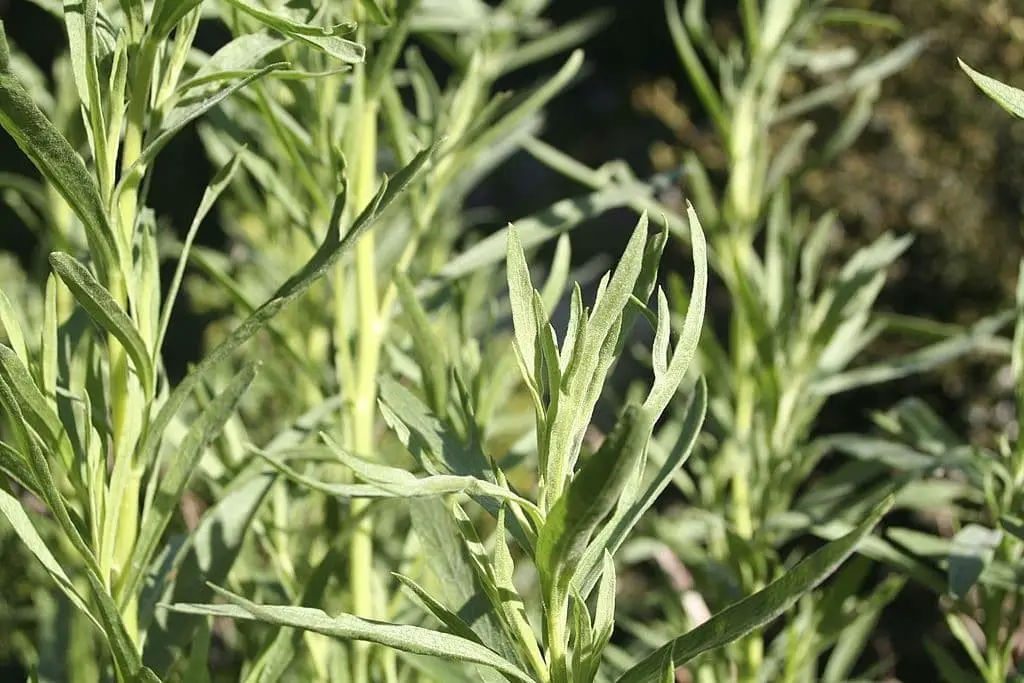
Artemisia dracunculus, commonly referred to as tarragon, is a perennial herb that boasts a range of medicinal properties. The leaves and flowers can be utilized to create teas, tinctures, and extracts, making it a versatile ingredient for various health applications. Tarragon’s anti-inflammatory and analgesic properties make it an effective treatment for joint pain, muscle aches, and headaches.
Its antispasmodic properties also render it useful in alleviating stomach cramps and other digestive issues. Additionally, the herb possesses mildly sedating qualities, which can help reduce stress levels and promote relaxation. This versatile herb is commonly employed to treat various digestive problems, including its diuretic, laxative, and carminative properties. Tarragon has also been known to lower blood pressure, relieve toothache pain, and induce sleep in individuals with insomnia.
Gardening enthusiasts can cultivate tarragon from seed or cuttings. For seed-grown plants, start the seeds indoors in early spring and transplant them outside when they have reached a sufficient size. Alternatively, take cuttings from an existing plant in late summer, root them in water, and then plant them outside in the fall. When it comes to harvesting tarragon, the optimal time is after flowering, when the leaves are at their most flavorful.
This can be achieved by cutting off a few sprigs from the plant and drying them for future use or chopping up fresh leaves as needed. To preserve tarragon’s potency and flavor, store it in a cool, dark place. It can also be kept fresh by wrapping it up and freezing it for future use or drying the leaves for later consumption. In culinary applications, tarragon is prized for its robust flavor, which pairs well with chicken, fish, eggs, salads, and soups.
Thyme
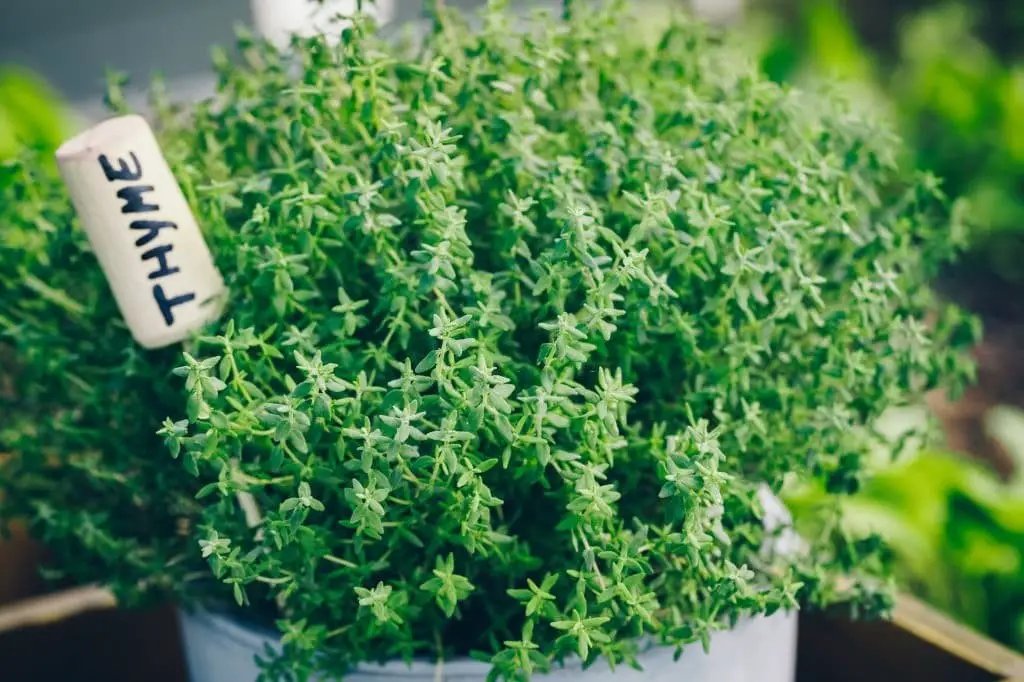
Thymus vulgaris, an evergreen herb reaching heights of up to 60 cm, boasts a plethora of uses beyond its culinary applications. The tiny, opposite leaves and pink, tubular flowers that cluster together make it a visually striking addition to any garden or arrangement.
Medicinally speaking, thyme has been shown to provide relief from respiratory issues such as bronchitis, asthma, and congestion.
Its properties also lend themselves well to treating digestive problems including indigestion, diarrhea, and vomiting. Furthermore, the herb’s antioxidant capabilities make it a valuable tool in combating inflammation.
In terms of culinary applications, thyme is a staple in both Mediterranean and French cuisine. Its versatility allows it to be used to flavor a wide range of dishes, from hearty soups and stews to delicate sauces and rice or meat-based main courses.
Turmeric

Turmeric, scientifically known as Curcuma longa, is a tropical plant that has been used for centuries due to its numerous health benefits. The rhizome, or root, is the most commonly utilized part of the plant, which is responsible for giving curry powder its distinctive yellow color. This versatile ingredient not only adds flavor to various dishes but also boasts anti-inflammatory properties, making it a valuable addition to any wellness routine.
In fact, studies have shown that turmeric can be just as effective in reducing inflammation as ibuprofen. Additionally, it has been demonstrated to possess anti-cancer properties and can even help boost the immune system. Turmeric’s health benefits make it an excellent ingredient to incorporate into your daily diet. You can add a teaspoon of turmeric powder to soups, stews, or smoothies, take it in capsule form, or apply it topically as a paste to treat skin conditions.
To cultivate this tropical plant, you’ll need to provide it with warm weather and ideally grow it in a pot that can be brought inside during the winter months. This will ensure your turmeric plants thrive and continue to produce the valuable root for your use.
Winter Savory

Winter savory, scientifically known as Satureja montana, is a distinctively flavorful herb that can be used as a substitute for sage and thyme. Its robust taste makes it an excellent addition to stuffing and poultry dishes. One of its notable features is the presence of carvacrol, a unique flavoring agent that provides medicinal properties. This herb has been traditionally used to alleviate digestive issues such as diarrhea and flatulence, as well as treat malaria, fevers, and headaches.
When cultivating Winter savory, it thrives in full sun and well-drained soil. It can be grown from seed or propagated through division in the spring. As a strong-flavored herb, Winter savory is an excellent alternative to sage and thyme in various culinary applications.
Wormwood

Artemisia absinthium, with its bitter-tasting leaves, has a rich history dating back to the traditional production of vermouth. Its digestive properties are well-documented, making it a popular natural remedy for stimulating digestion. According to the University of Maryland Medical Center, wormwood can be consumed as an essential oil or in tea form – simply steep one teaspoon per cup of boiling water three times daily.
When it comes to cultivation, wormwood thrives in full sun and well-drained soil. Its medicinal uses are just as impressive, with a long history of treating digestive issues such as anorexia and indigestion, as well as liver disease and malaria. Beyond its health benefits, wormwood is also used to add flavor to certain dishes, most notably the infamous absinthe, which was famously banned due to its high alcohol content and alleged hallucinogenic effects.
Yarrow

Achillea millefolium, also known as yarrow, is a perennial herb with a rich history of therapeutic applications. Its dried flowers and leaves can be brewed into a tea that boasts an impressive array of antioxidants and anti-inflammatory properties.
To cultivate this versatile plant, one need only provide it with well-drained soil and full sun to partial shade. It’s also remarkably drought-tolerant, making it an ideal choice for gardeners of all levels.
From a medicinal standpoint, yarrow tea has been traditionally used to combat colds and flu, while its anti-inflammatory properties make it a valuable asset in the treatment of various ailments. Beyond its health benefits, yarrow leaves can also be incorporated into salads or used as a garnish for added flavor and visual appeal.
Conclusion
Herbal remedies have been a cornerstone of natural healthcare for centuries, with a vast array of plant-based options offering numerous benefits for overall well-being. By exploring the diverse properties of different herbs, individuals can select the most suitable ones to address their unique health concerns.
From ancient traditions to modern-day applications, herbs continue to be a popular choice among those seeking natural alternatives to conventional medicine.
These versatile botanicals can be consumed in various forms, including capsules, teas, tinctures, and essential oils.
The advantages of incorporating herbs into one’s lifestyle are multifaceted. They can fortify the immune system, counteract inflammation, and contribute to improved overall health. Additionally, herbs have been shown to alleviate stress levels, enhance sleep quality, and promote a general sense of well-being.
Related Posts
When it comes to cultivating your green thumb, starting with herbs is an excellent way to begin. In this section of our blog, we’re going to focus on three specific herb species that are perfect for beginners: rosemary, agastache, and cilantro/oregano/sage. We’ll dive into the ins and outs of growing each of these herbs, including their unique characteristics, uses, and benefits.
Whether you’re looking to spice up your cooking or create a thriving indoor garden, we’ve got you covered with our comprehensive guides on how to grow rosemary, agastache, and more.



